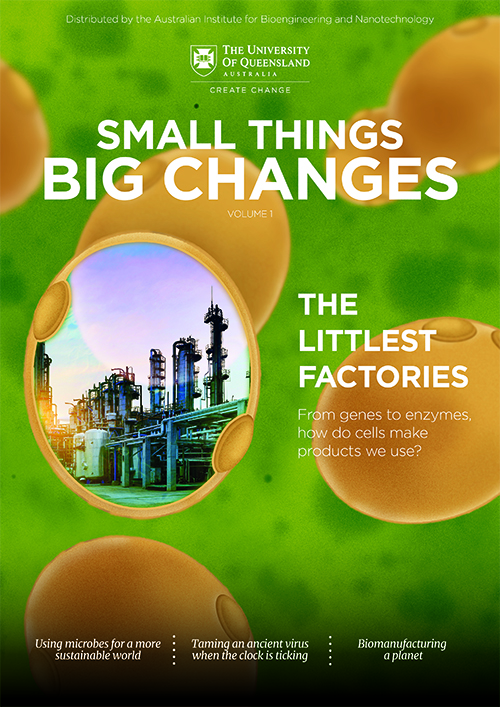Advanced biomanufacturing has become central to the production of industrially useful molecules including biochemicals, solvents, fuel additives, fragrances and more.

Over the last century, microbes have become increasingly central to a wide variety of industrial processes. Moreover, remarkable progress in genetics and genetic engineering technologies in recent decades— from the development of cheap, rapid genome sequencing to CRISPR gene-editing to the analysis of vast amounts of biological data with artificial intelligence (AI) — has revolutionised how microbes can be used, and ushered in a new era of Advanced Biomanufacturing.
Consequently, living cells and microbes are now vital to the production of biological molecules or ‘biologics’, such as vaccines, monoclonal antibodies, therapeutic proteins, and even components of blood. Advanced biomanufacturing has also become central to the production of industrially useful molecules including biochemicals, solvents, fuel additives, fragrances and more.
Furthermore, modified microorganisms have the potential to replace many petrochemical-based industrial processes, and are being used to facilitate the shift away from fossil fuels. In particular, microbes are being designed to directly reduce pollution through increased absorption of greenhouse gasses such as CO2 and methane, and can even be designed to produce biofuels and degrade plastics.
Professor Lars Nielsen of UQ’s AIBN explains that systems biology and synthetic biology are now playing a central role in these advancements. In other words, researchers are now taking a highly systematic approach to understanding how microorganisms and other living cells work at the molecular level. Then, with the help of cutting edge genetic tools, they are using this information to modify or entirely redesign the molecular assembly lines within those cells to produce valuable products at high volumes.“The science is moving from crude retrofitting of living systems with a single gene or a few genes using genetic engineering, to purposeful reengineering of living systems.”
Indeed, it is now possible to transfer an entire biochemical pathway from one species to another, as well as design new biochemical pathways from scratch and encode them into an organism’s DNA.
How to convince a microbe
A chemical called 1,4-butanediol (BDO) is an industrially valuable chemical used in the production of fibres, plastics and solvents. Because of this, it is widely used in the automotive, electronics, clothing and medical equipment industries. BDO is primarily produced from petrochemicals, so a shift toward microbial production would provide a more renewable alternative.
The microbe E.coli is often used in biomanufacturing, but as Professor Nielsen puts it, “E. coli doesn’t want to make BDO, it’s much happier making the molecule acetate.” In fact, no known organism is naturally capable of making BDO, so there was no genetic blueprint to go on.
To address this, the company Genomatica designed from scratch an assembly line of known enzymes that would be capable of converting sugar molecules into BDO. They then inserted the genes for these enzymes into an E. coli microbe and removed any genes that might interfere with that assembly line.
“They were able to convince E. coli that BDO is the product to make, and not acetate,” says Professor Nielsen.
The new microbe was indeed capable of turning sugars into BDO and at higher yields than anticipated.
Scaling Up
Natural organisms have not evolved to achieve high yields of biochemicals, they just evolved to produce what they need. When designing a new molecular assembly line in a microbe, or tweaking one that already exists, researchers endeavour to include modifications that will coax the microbe into making high volumes of the desired product.


